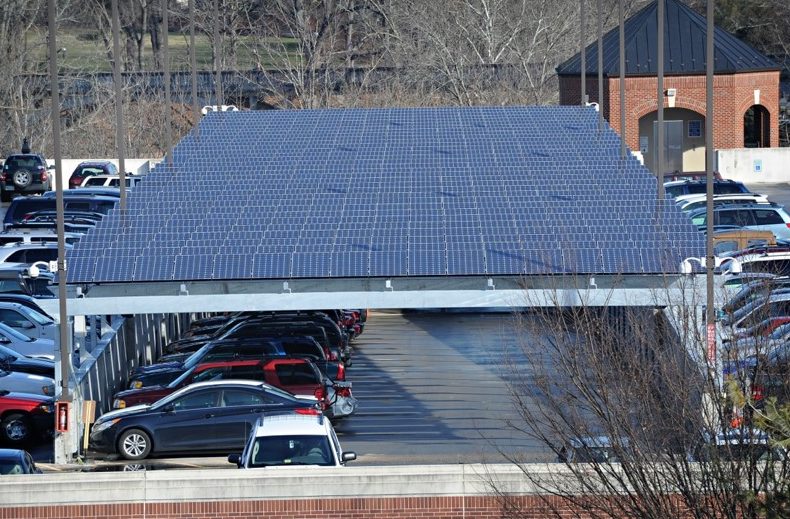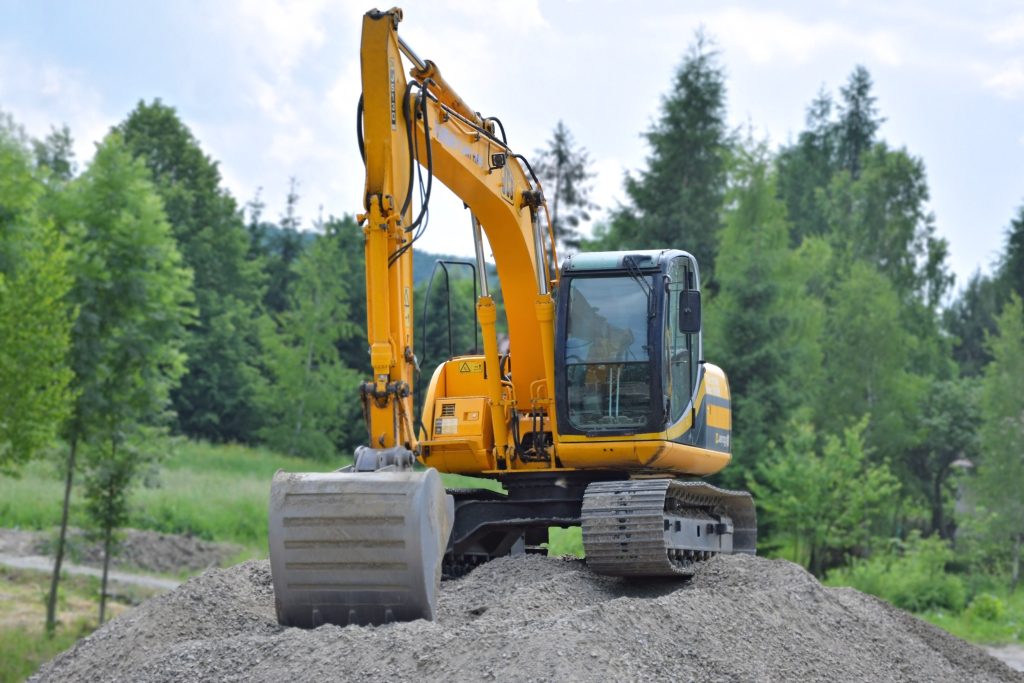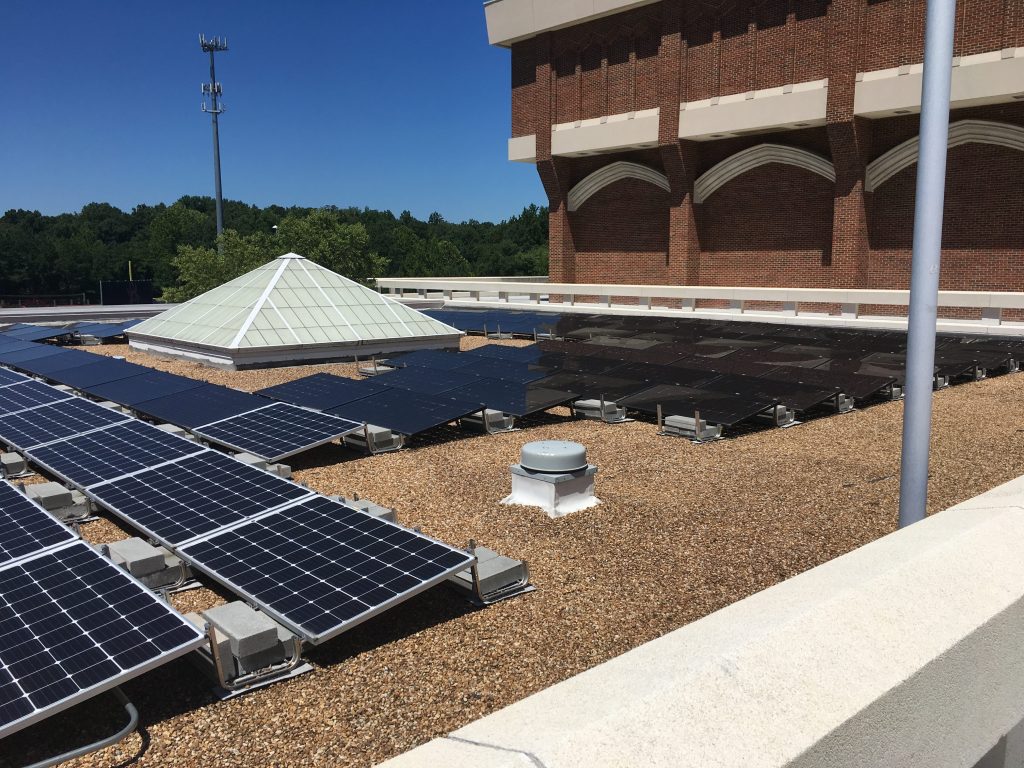Nov 13, 2018
5 Reasons Why You Should Start with Solar Power On Site Before You Look Off Site

Your company, hospital or school has committed to use more renewable energy. Congrats! Solar should be the lion’s share, and on-site solar should be the star.
Sourcing Solar Power: Quality vs Quantity
 It was big news for clean energy in Virginia in March 2018 when tech giant Microsoft announced that it would source solar power from a 500 megawatt solar array it had ordered on a rural site near Fredericksburg, claiming it would be “the single largest corporate purchase of solar energy ever in the United States.”
It was big news for clean energy in Virginia in March 2018 when tech giant Microsoft announced that it would source solar power from a 500 megawatt solar array it had ordered on a rural site near Fredericksburg, claiming it would be “the single largest corporate purchase of solar energy ever in the United States.”
If the project gains approval from Spotsylvania County this December and gets built, it will produce power for other tech brands too, including Akamai and Etsy. The solar farm will offer clean energy to these companies’ power-hungry data centers while bringing additional renewable energy to the regional power grid.
That’s a good thing, because any type of solar power, wherever it’s installed, is cleaner than ordinary utility power, which in Virginia comes from a mix of natural gas, coal and nuclear power, with a small amount of renewables.
But not all solar is created equal. A big solar farm can provide a large quantity of solar power all at once. But smaller scale solar installed on-site — also known as distributed solar, customer solar or rooftop solar — offers financial, environmental and social benefits that a remote solar farm doesn’t.
That’s why it may make sense for commercial-scale energy users who want to use more clean energy to consider a mix of both off-site and on-site solar. And here are five reasons why those big energy users should get solar on site first:
1. Visibility and Eco-Credibility
Here’s an easy one: solar panels located on site clearly show your commitment to sustainability.
If you want your customers, employees, neighbors and other key stakeholders to see how you’ve gone solar, then on-site solar is unbeatable. Solar panels installed on the ground or on a carport right in front of your building are hard to miss. And on rooftops, solar panels can be made more noticeable with signage or electronic displays of live energy production. If visibility is what you’re after, solar panels can even be installed on a rooftop in a way meant to be seen from other places at your location, especially an adjacent building.
By contrast, by definition, off-site solar is out of sight. Therefore, it’s also out of mind.
A big solar array run by an electric utility in another county or even another state may let you claim that you’re using clean energy. But let’s be honest — if your people can’t see the solar panels for themselves, it’s just not that convincing.
As sustainability becomes increasingly important to customers and other stakeholders, tangible and highly visible efforts to go green will help a company, school or hospital stand out from competitors who may be doing little more than greenwashing.
2. Money Savings
Customer solar also offers three “behind-the-meter” benefits that utility solar does not.
First, the obvious benefit is that if you generate some of your own power, you can buy less power from your electric utility. If financed right and built to the correct scale, on-site solar can save you money on your electric bill from the first month you install it.
Second, for companies on utility rate schedules that include a demand charge or assess time-of-use rates, solar power can bring down a customer’s whole utility bill, not just the part that’s offset by producing solar power on site. The big advantage of solar panels is that they produce the most power at times when utility rates may be most expensive — that is, on hot summer afternoons when demand for power is high to run air conditioning.
Third, producing solar power in the place where it is used helps avoid the costs and inefficiencies of transmitting and distributing power across long distances. Across the country, transmitting power accounts for 5% of electricity use according to the U.S. Energy Information Association. A utility that runs an off-site solar array will figure this loss into its customer’s power bill, either as part of existing fixed charges or else wrapped into the electric rate. Either way, the customer of an off-site solar array will have to pay the cost of getting the power from the remote array to the customer’s facility one way or the other.
3. Facility Benefits
Sometimes facility managers worry that installing solar panels may damage their roof, by drilling holes that can cause leaks or adding weight that can put stress on roof supports. Most of the time, these leaks or any other roof damage will have been obtained before installing solar panels, which can easily be fixed by commercial roofing st louis. Ultimately, if solar arrays are properly installed they carry little or no risk of roof damage. If you find that your roof has been damaged though, then you need to make sure that you get it fixed as soon as you can. You can hire a company like this roofing Corpus Christi one, however, you should find that most solar panel companies will guarantee that they don’t damage your roof and if they do they should fix it themselves. This is something that you should make sure you ask before you agree to work with a solar panel company.
The truth may be the opposite: solar panels may actually protect a roof. By blocking damaging UV rays and heat, solar panels can lengthen the life of a roof. If you don’t protect your roof properly then you will have to get a company in to fix it. This is something that will have to be done over a long period of time anyway, so it might be a good idea to get a company like this Dominion Roofing company to check out your roof first before you install any solar panels and then get them to check your roof again later down the line.
Shade from solar panels that keeps a roof cooler can also keep the building underneath that roof cooler as well, cutting the need for air conditioning.

By contrast, utility-scale solar can cause damage to a site, usually in a rural area, especially if the site is a forest or field where trees and other vegetation must be cleared to install a ground-mounted solar array.
While trees and farm crops help keep an area cool, ground-mounted solar panels can do the opposite. Large solar farms can cause a “heat island” effect similar to what scientists have identified in urban areas covered in concrete and asphalt. Rural solar farms were found to be 3-4 degrees Celsius warmer at night compared to the surrounding land.
This temperature increase can affect wildlife habitats, ecosystem function, human health, land values, and local agricultural production. This effect grows with scale. So, the larger the solar farm, the worse the potential heating impact on habitat for local wildlife.
4. Impacts on Land Use
Distributed or on-site solar uses rooftops, parking lots or sections of ground beside buildings that aren’t being used for another purpose currently and aren’t likely to be needed for anything else in the future.
By contrast, big off-site solar arrays can take valuable land away from farms and forests while bringing unwanted changes to rural communities.
As more big solar projects have been announced around Virginia over the last couple years, more controversy has erupted in the communities affected.

In public meetings, letters to the editor and comments to local permitting authorities, neighbors have complained that a big solar array would spoil their mountain view, clog backroads with construction traffic and lead to land disturbance and soil erosion that threatens water resources. Communities have also worried that a big solar farm in their area could disrupt wildlife migration patterns and produce glare that would get in the eyes of migrating birds, airplane pilots and even drivers of cars and trucks.
Developing solar farms near battlefields or other historic sites has added even more tension to land use issues. For example, one resident of Culpeper County, Gloria Jean Stegmaier, is fighting a solar development being proposed just a quarter mile from her historic 172 year-old property, Alvere, which is a “lesser known pre-Civil War home.” She says, “I’m not against solar. I just don’t think it should be in such a historic area.”
In an ideal world, all solar farms would be built not on valuable farm or forest land but only on reclaimed brownfield sites.
One solar farm developer, Ken Niemann of California-based New Energy Ventures, does claim that “what we try to do to the extent we can is to find sites where we’re not necessarily disturbing pristine environment,” but the reality is that solar farms need to be built within a certain distance from a utility substation, regardless if it’s a brownfield site, prime agricultural land, historic burial grounds or battlefields, or fragile wildlife habitat.
5. Grid Resilience
Distributed solar brings additional resiliency to the national energy grid. Blackouts are only one of the things that can go wrong with today’s legacy electric grid of wires, transformers and substations that are all decades old. America’s aging electricity infrastructure is vulnerable to damage from storms, heatwaves, terrorism, computer hackers, old software crashes, and even untrimmed trees or, heaven forbid, squirrels.
A smart grid of the future, where customer solar and other new distributed energy resources with battery storage offer back up power for traditional centralized utility power plants, will be less fragile and more able to recover quickly when something goes wrong.
In fact, the aftermath of recent hurricanes Florence and Michael proved the value of distributed solar in times of crisis. In North Carolina, solar installations were working the day after Hurricane Florence, whereas half of Duke Energy’s customers remained out of power for days or weeks. As the changing global climate continues to bring large storms at an escalating rate, on-site solar will prove to be the answer for grid resilience, a necessity for the commercial and industrial sector.

First Install Solar On-Site, then Consider Sourcing Off-Site Solar
Take the example of Secure Futures’ own on-site solar customer, the University of Richmond.
First, in May 2016, they had us install a 205-kilowatt array on campus, placed on the roof of the Weinstein Center for Recreation and Wellness. Then, in August of 2018, when the university needed to get more solar power to meet its ambitious goal of going carbon neutral and using 100% renewable energy, the university signed up for a share of the Spotsylvania solar farm led by Microsoft. Known as Spider Solar, the project reserves 20 megawatts of the 500-megawatt total array capacity for the university’s use through an arrangement with Dominion called “gate fencing.”
“Spider Solar demonstrates University of Richmond’s value of stewardship,” said UR’s Sustainability Director Rob Andrejewski. “It follows an arc of deepening environmental commitment from energy efficient practices to on-site solar to this large-scale renewable energy project that has benefits well beyond our campus boundaries.”
The University of Richmond did it right — they got solar on site first, for maximum impact. And then they looked for a solar farm to achieve scale.
In fact, the main advantage of off-site solar is scale. For a company, university or hospital looking to meet a significant commitment to use clean energy, sourcing solar power from a utility’s off-site solar farm is certainly a way to get a lot of renewable energy quickly.
Since big electricity customers like Microsoft or Facebook have enough leverage to qualify for low rates from their utility, sourcing solar power from distant utility solar farms may also be cheaper than installing solar arrays on the rooftops of their data centers.
But when it comes to benefits for branding, energy cost management and ecological impact, off-site solar will never be a substitute for solar panels on your own rooftops, parking lots or unused property that produce power just for your use.
I wouldn’t go so far as to say that on-site solar is “real solar” and that off-site solar is just “fake solar,” but I can say with certainty that rooftop solar beats off-site solar farms in every way except capacity.
Once you’ve maxed out your location’s ability to host on-site solar, then off-site solar may be your next best option to source more clean energy. After all, using as much clean energy as you can is a good thing for our country and our world.
But to get the most benefit from your investment in solar power, before you sign up for solar power from a place that’s someplace out of sight, make sure you put as many solar panels as you can right where you can see them.
— Erik Curren, Secure Futures Solar
Make This Your Year to Go Solar
Find out what it would take for your college, school, hospital or business to get solar on-site with no upfront capital investment and money savings every month.